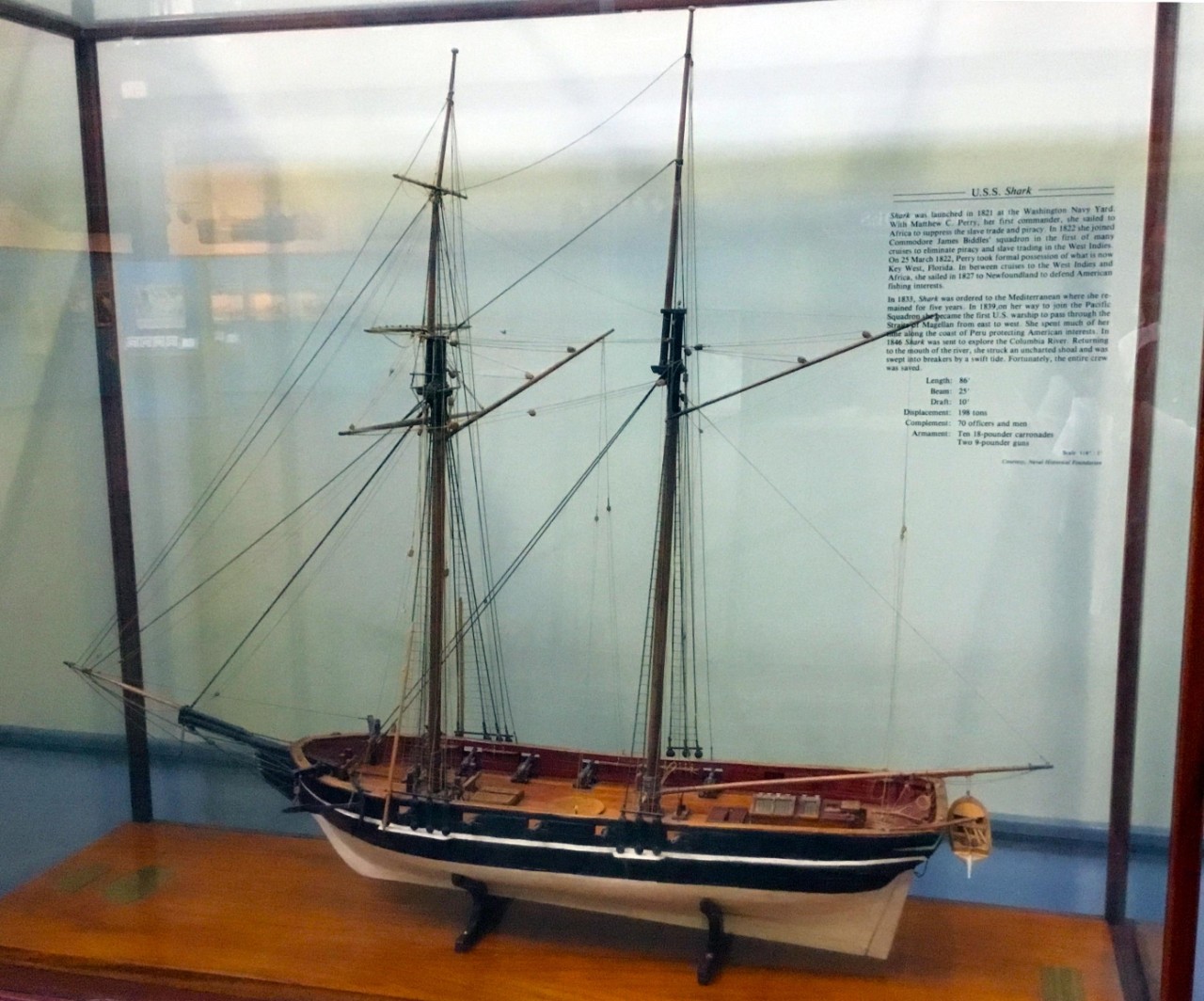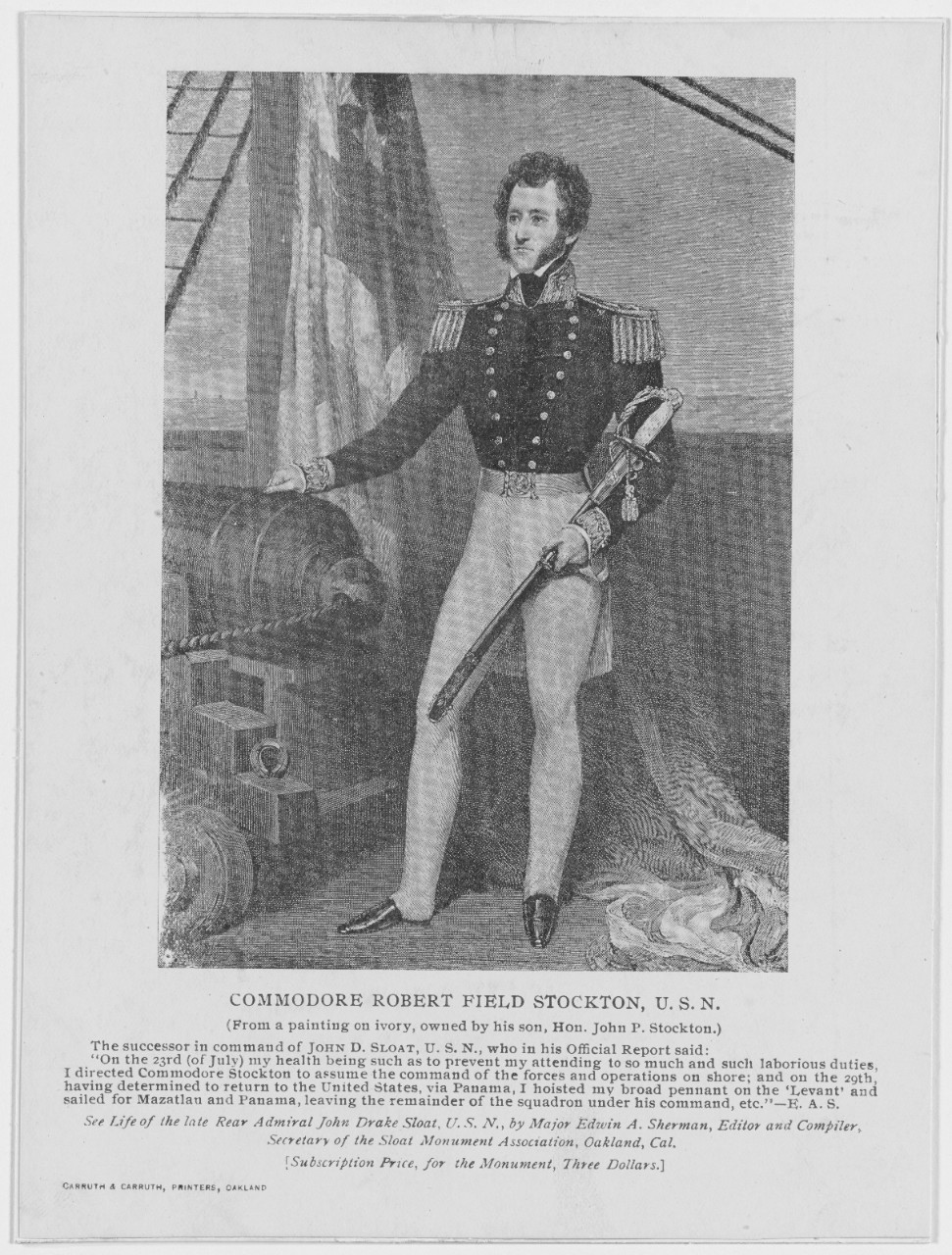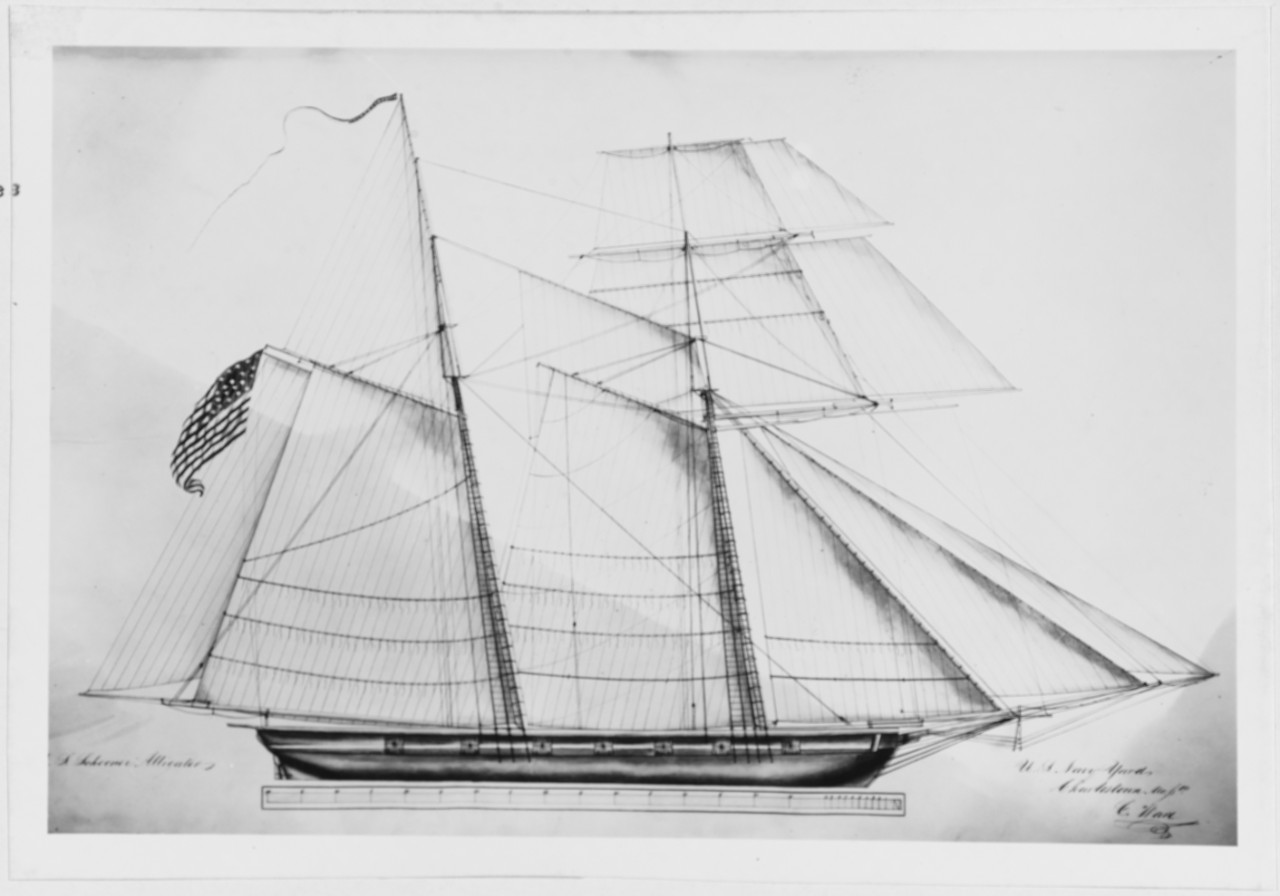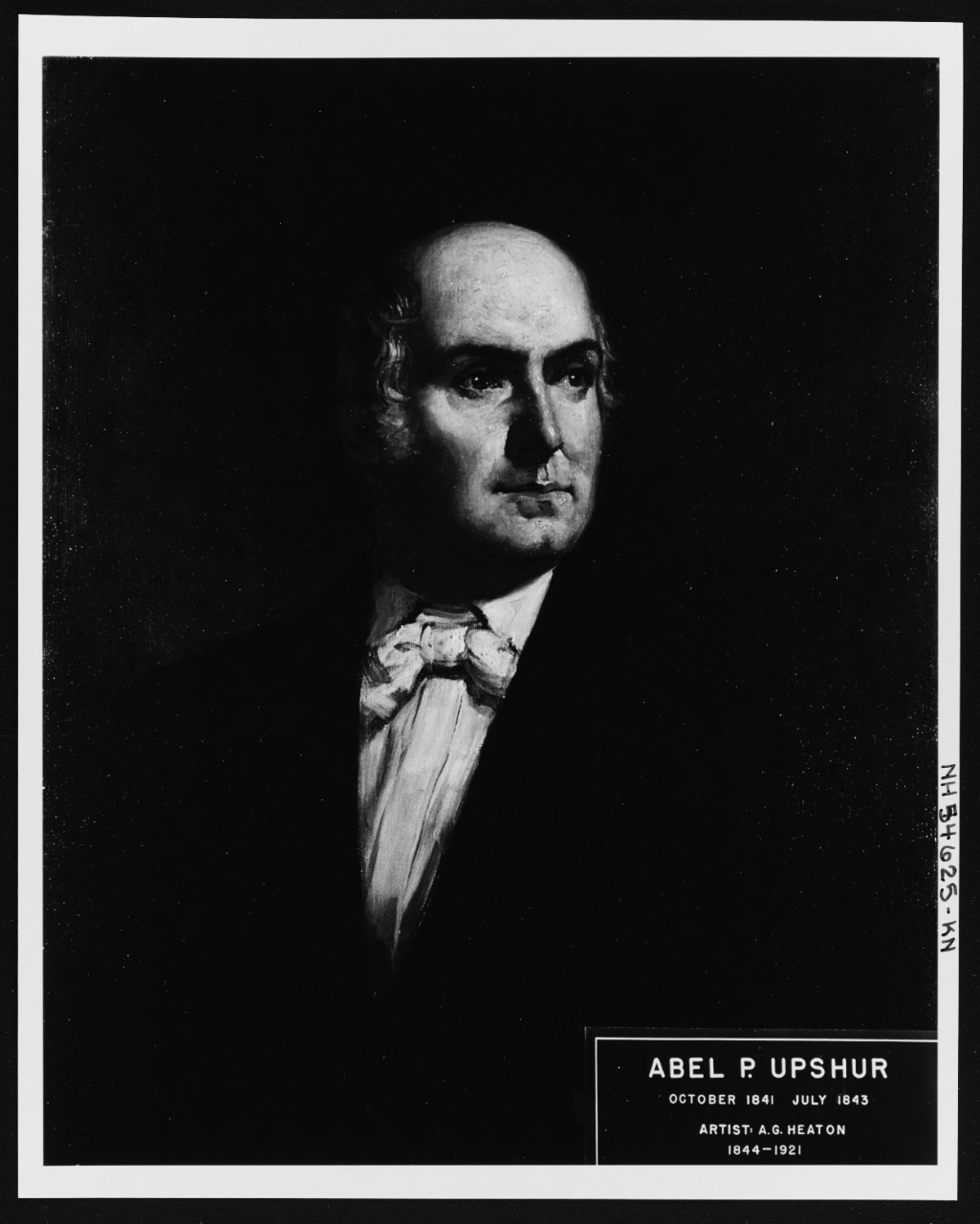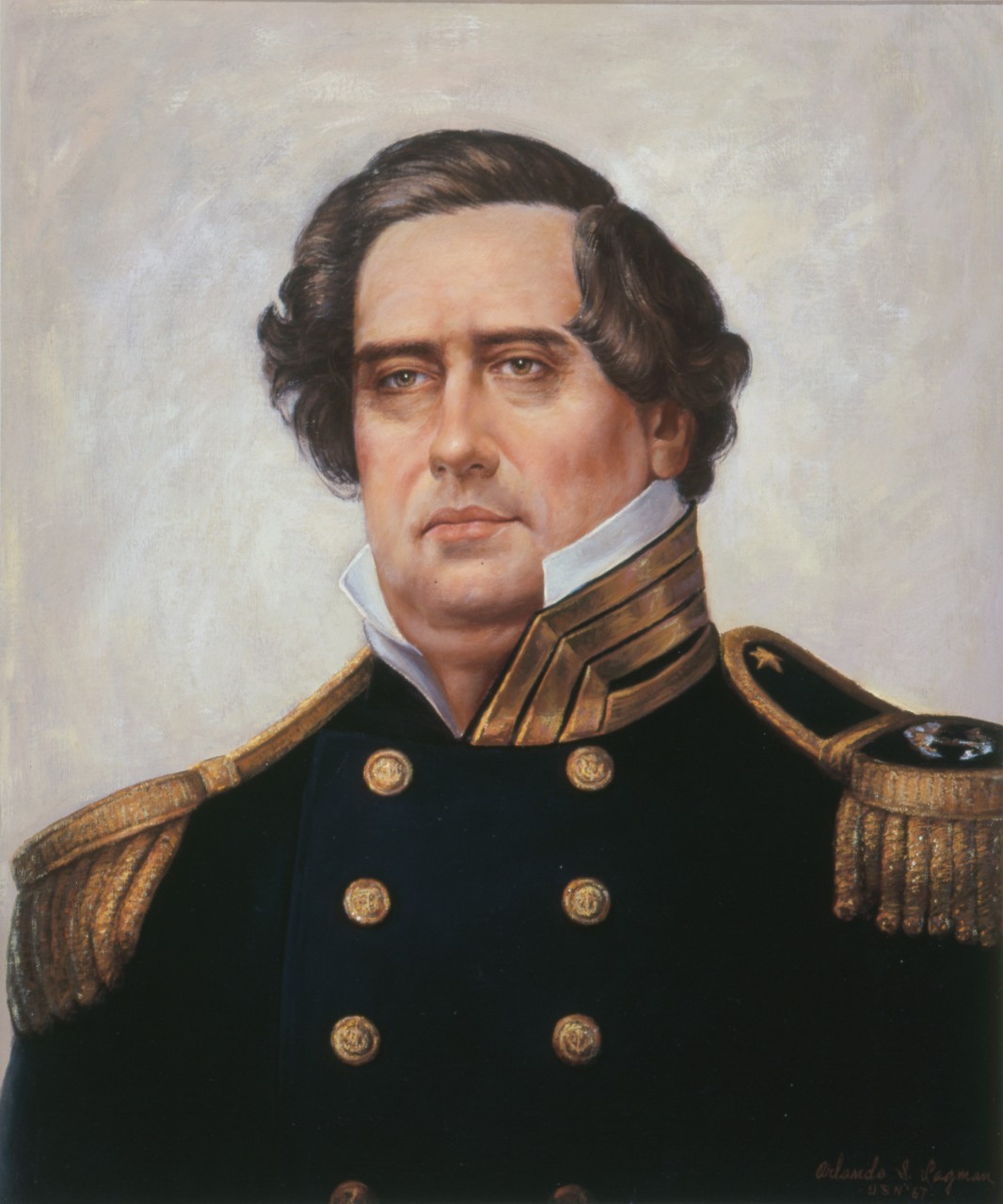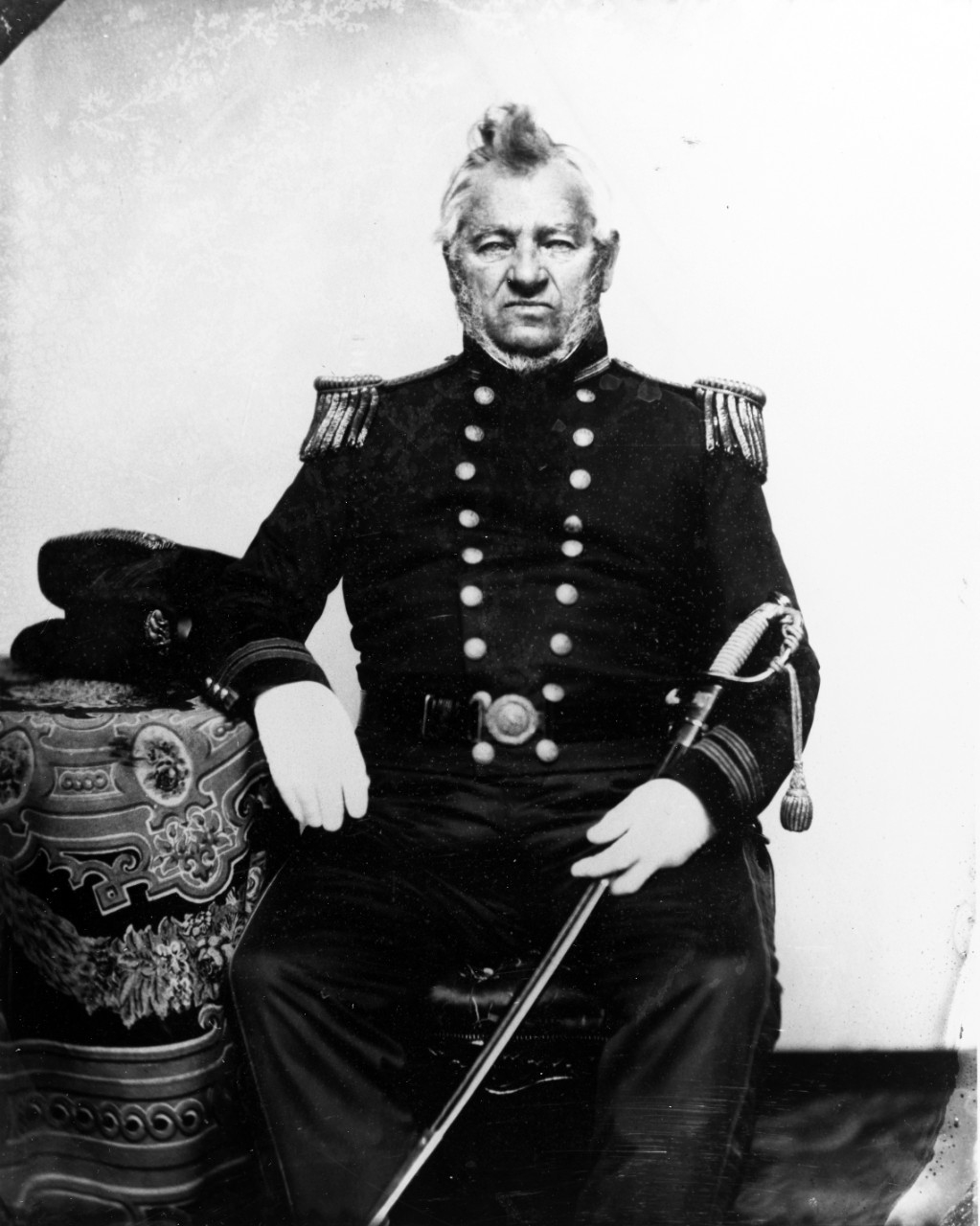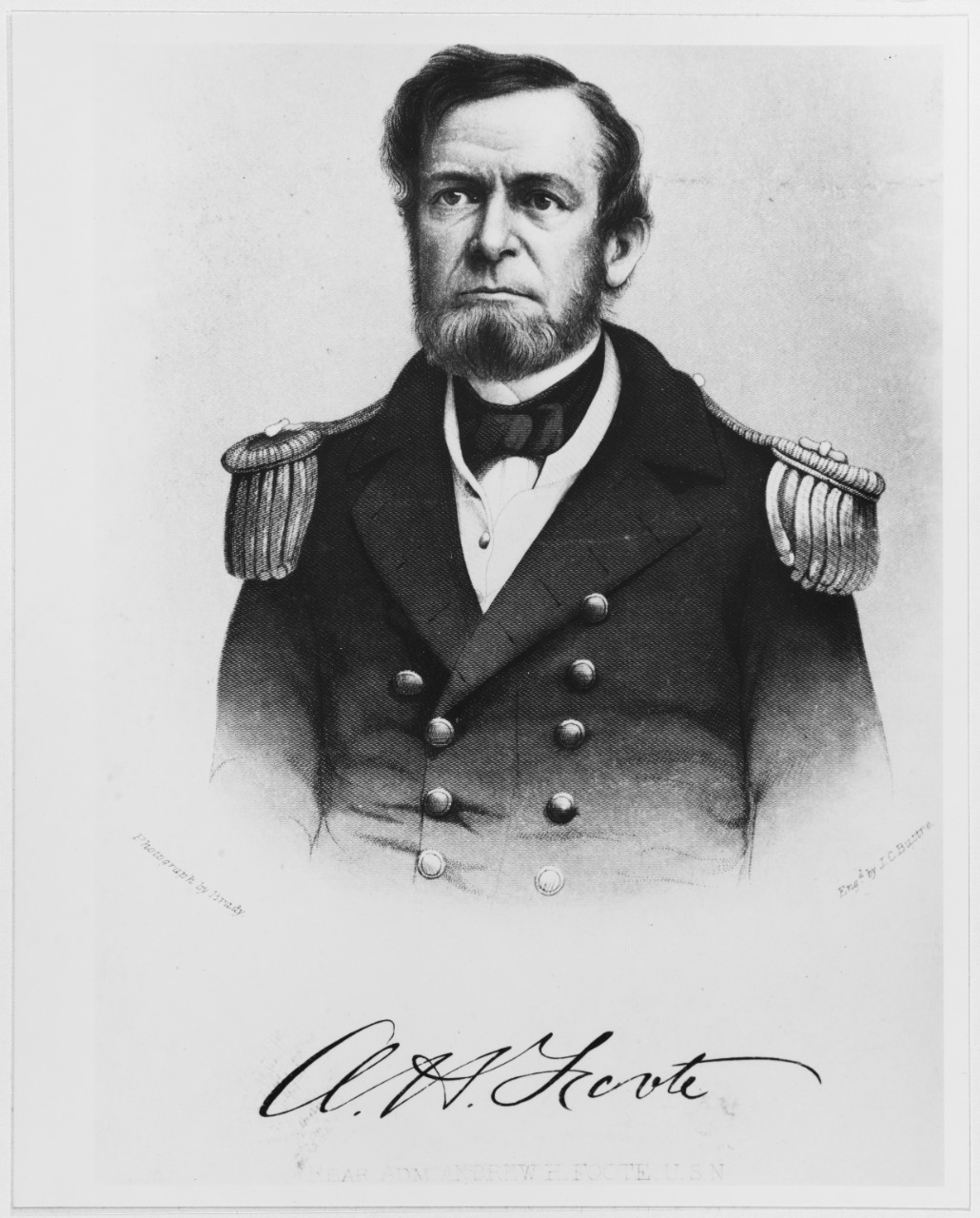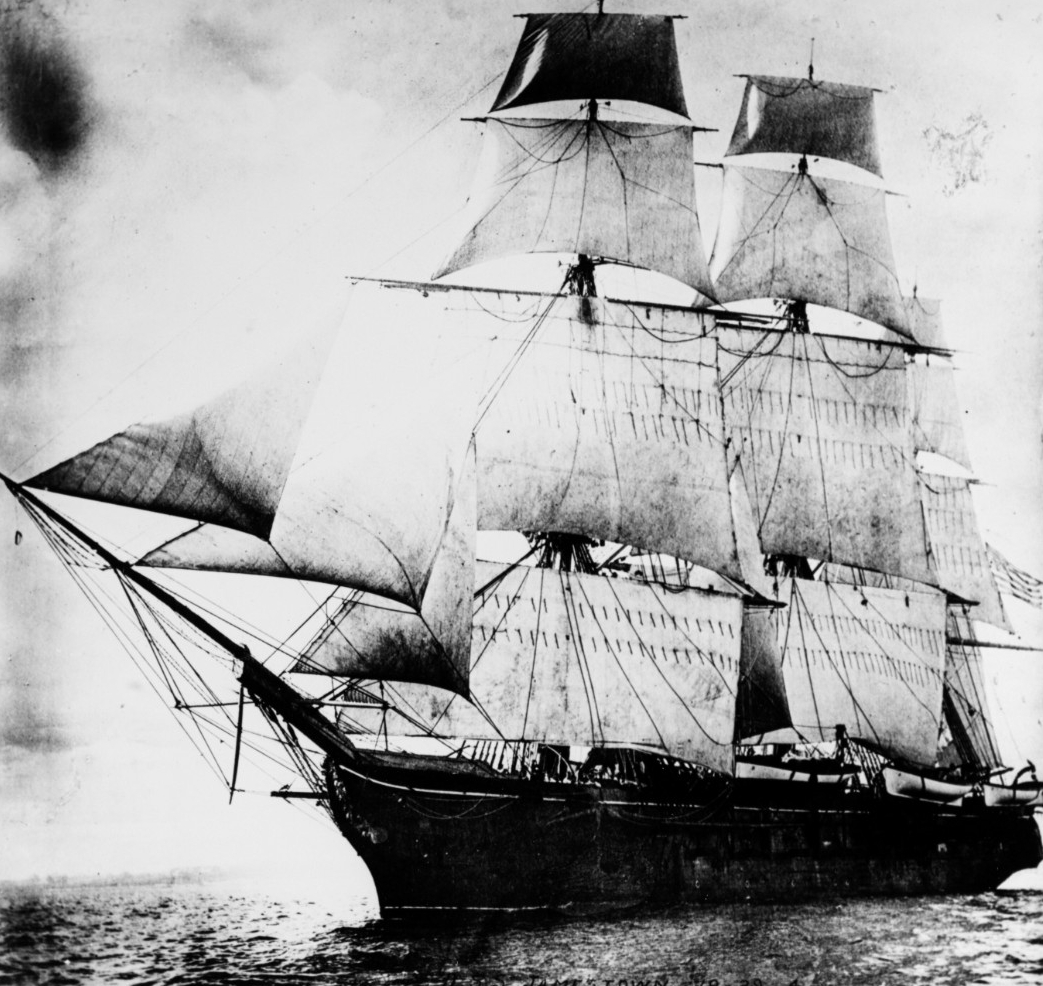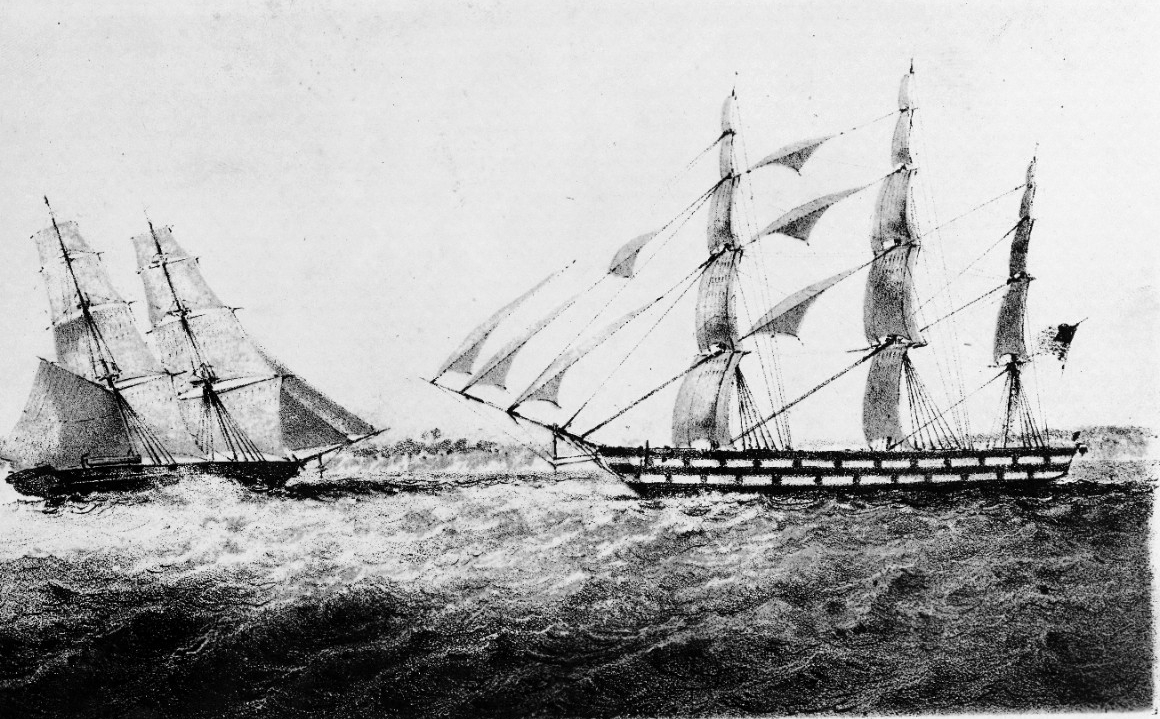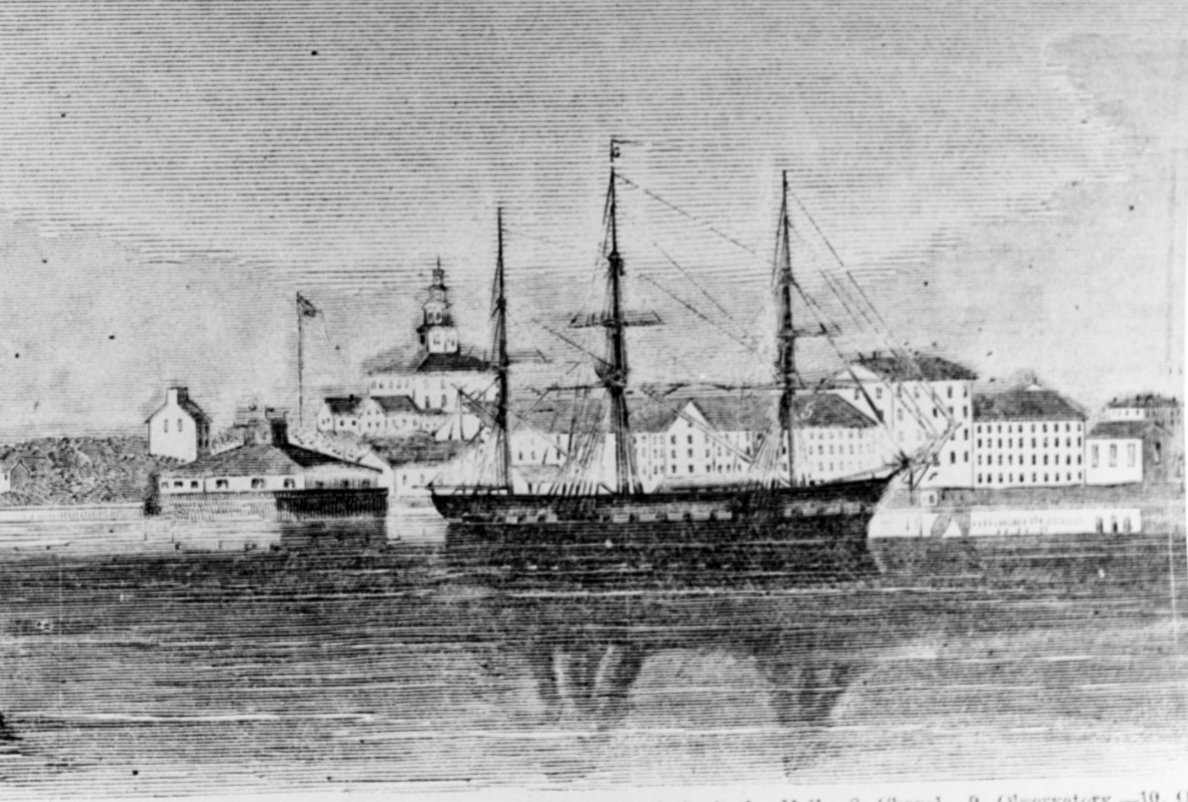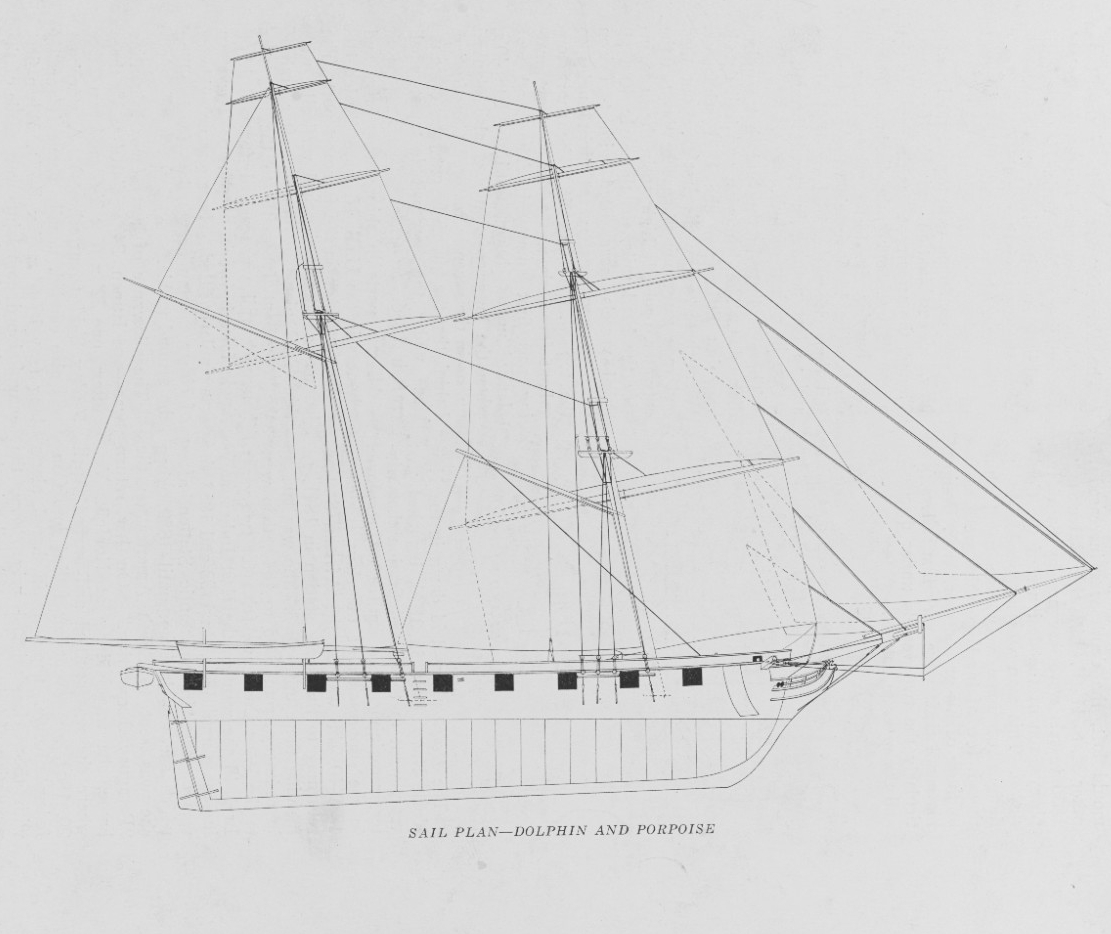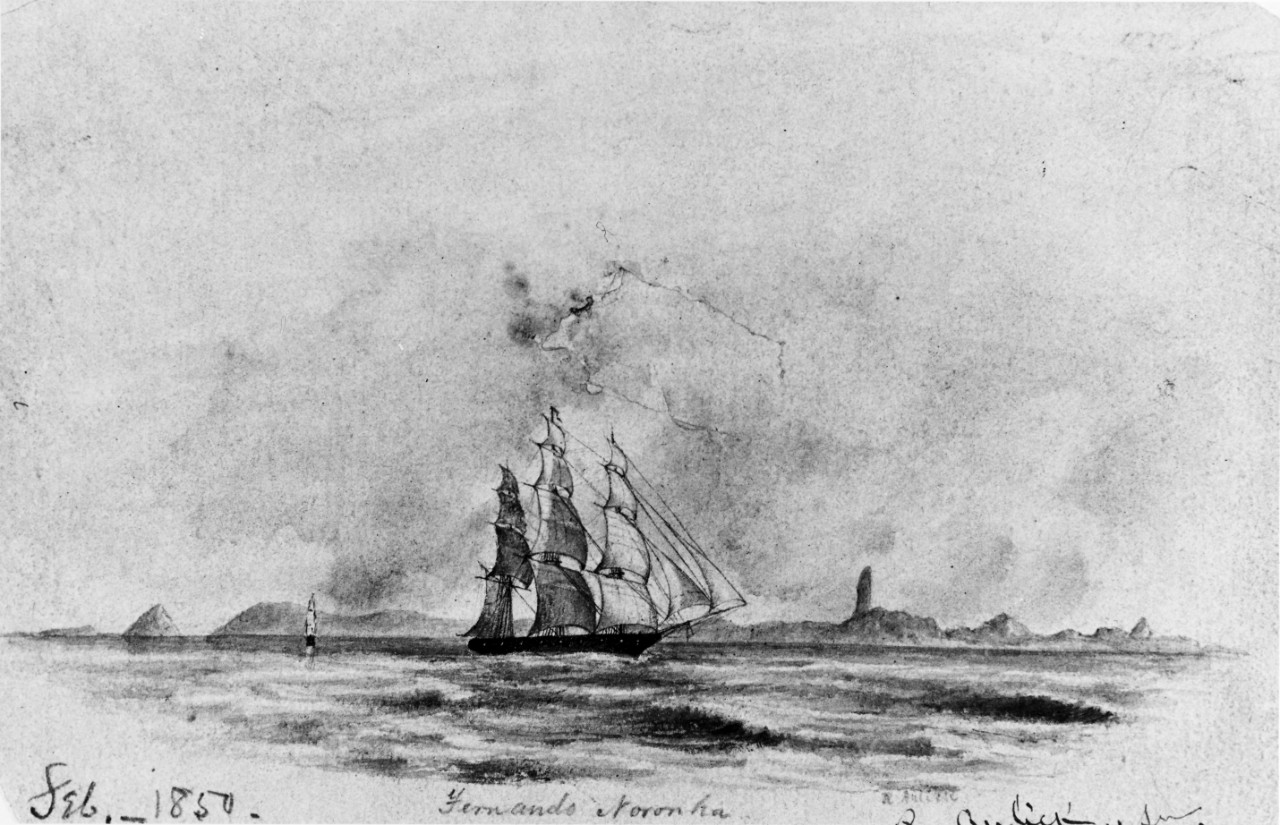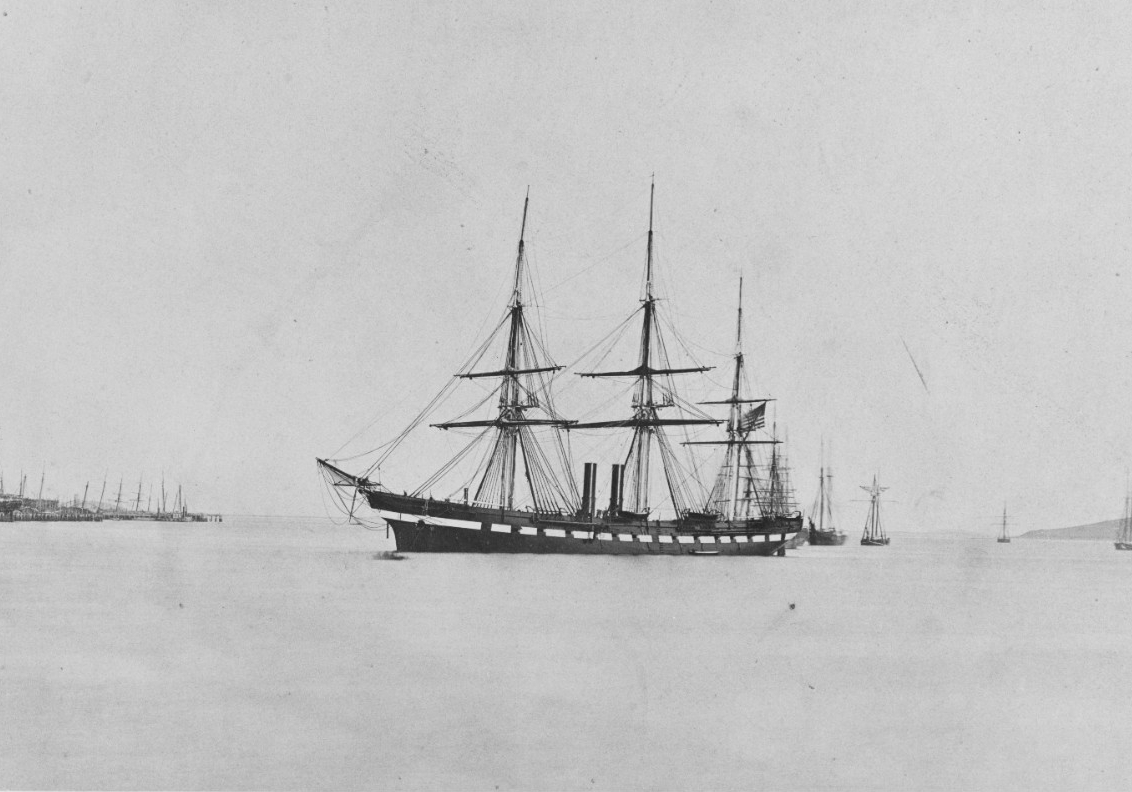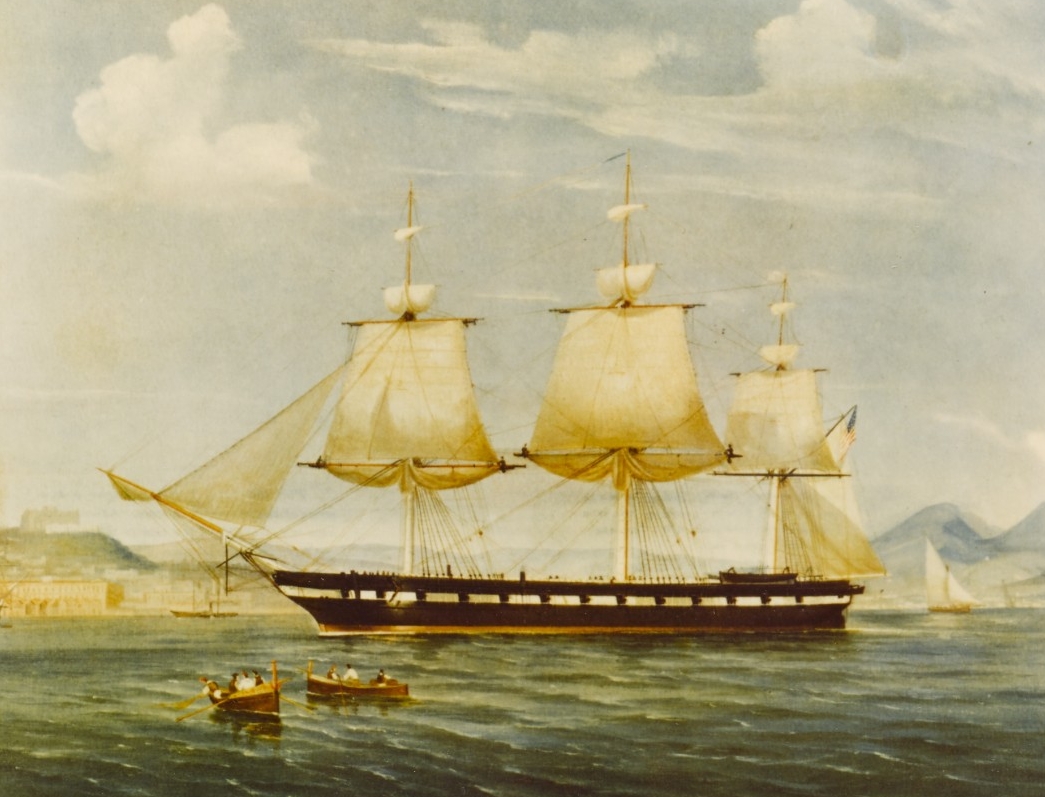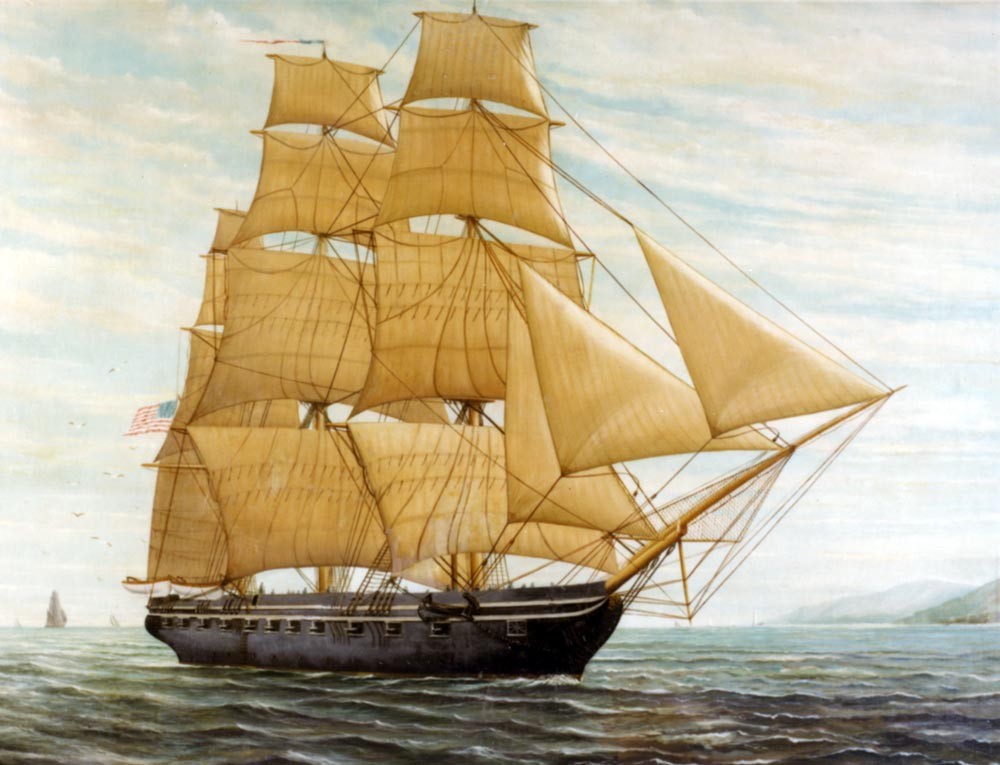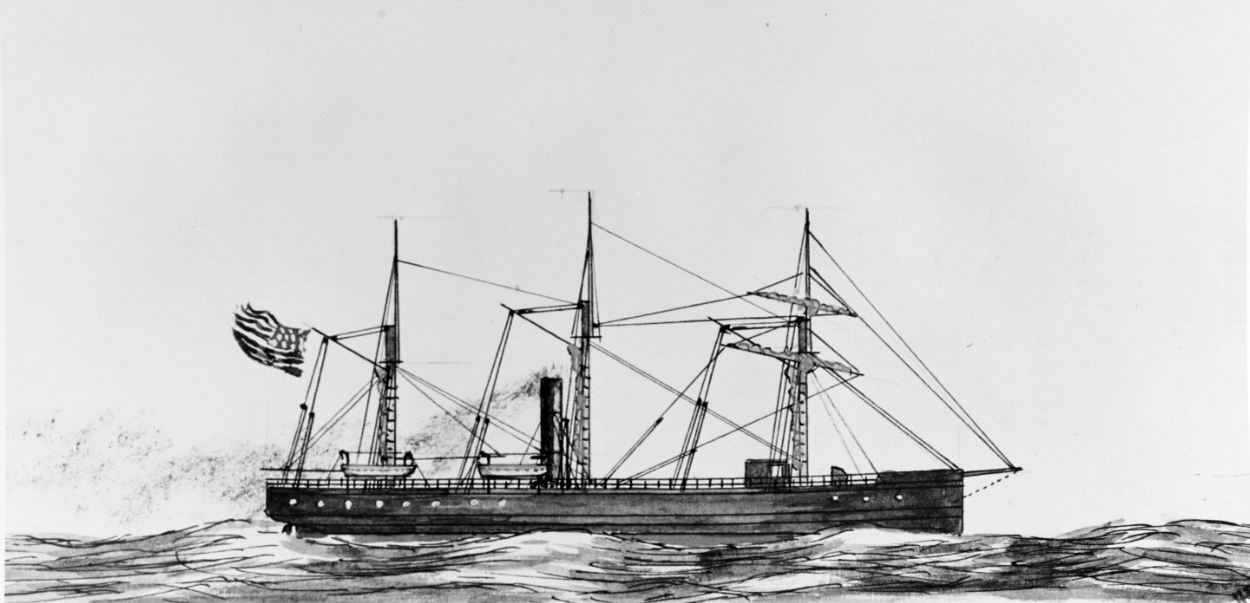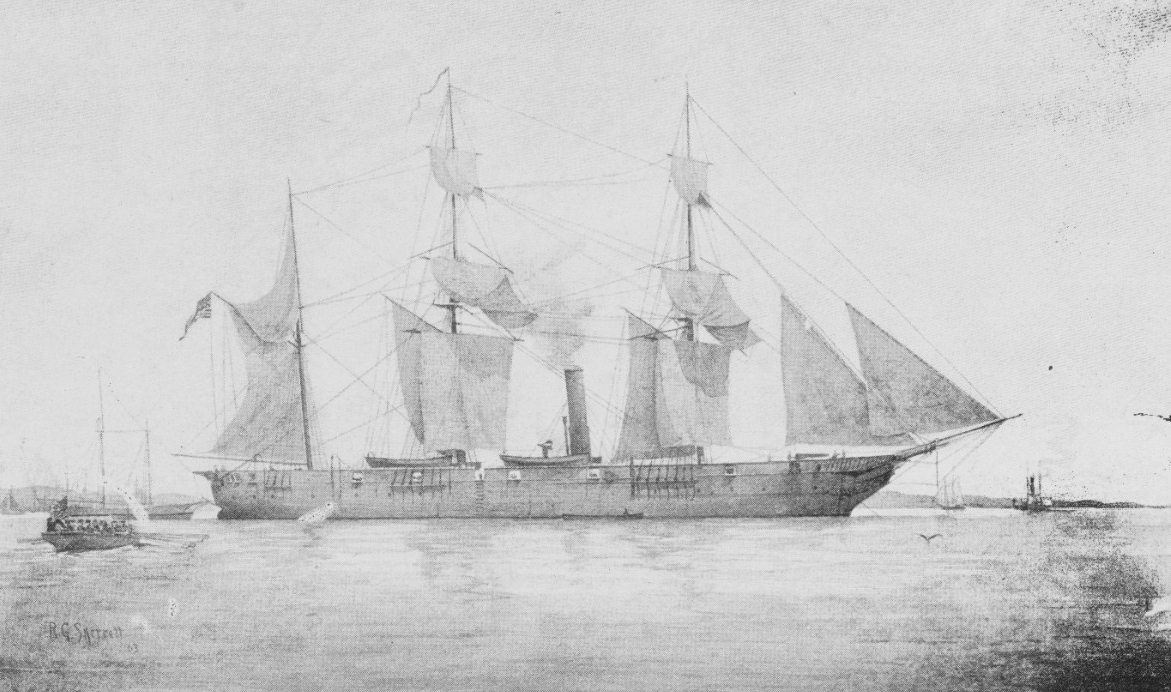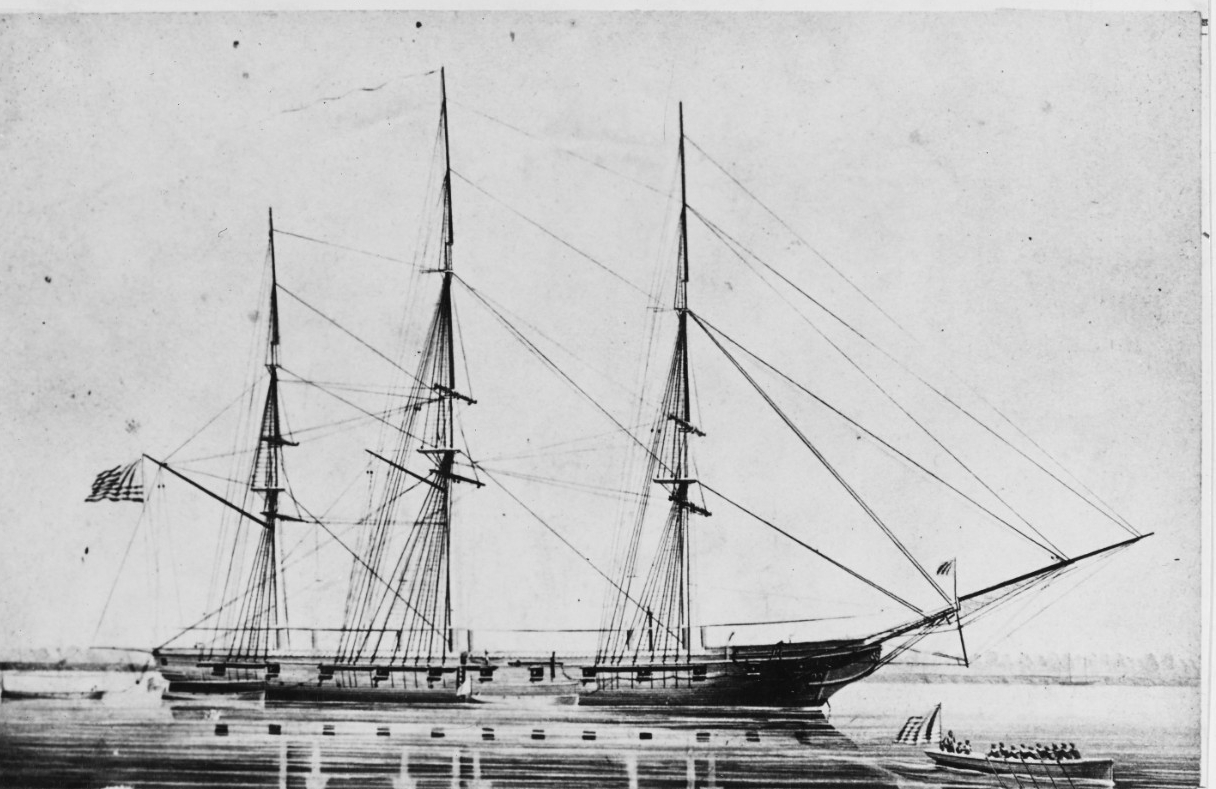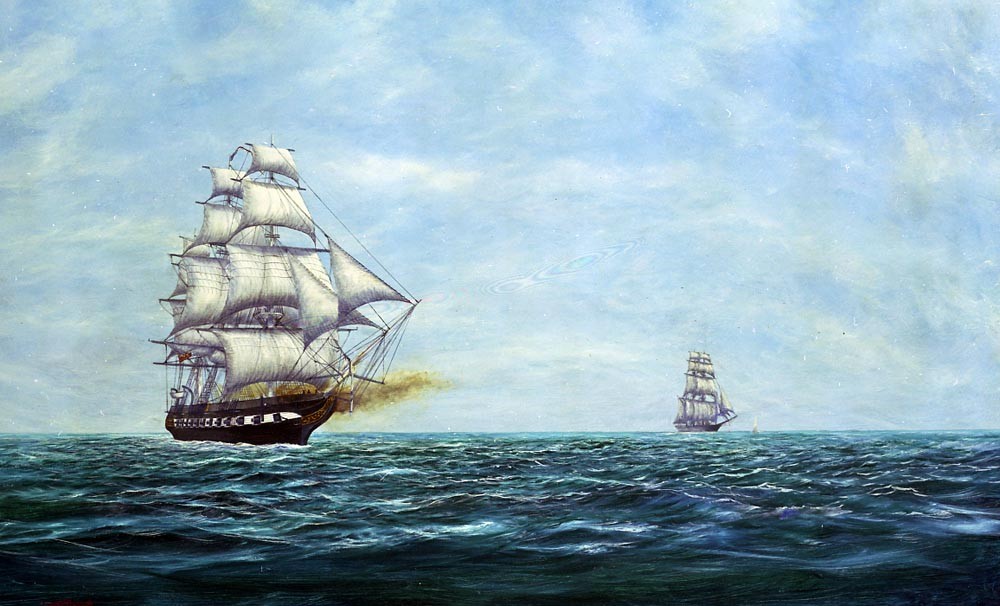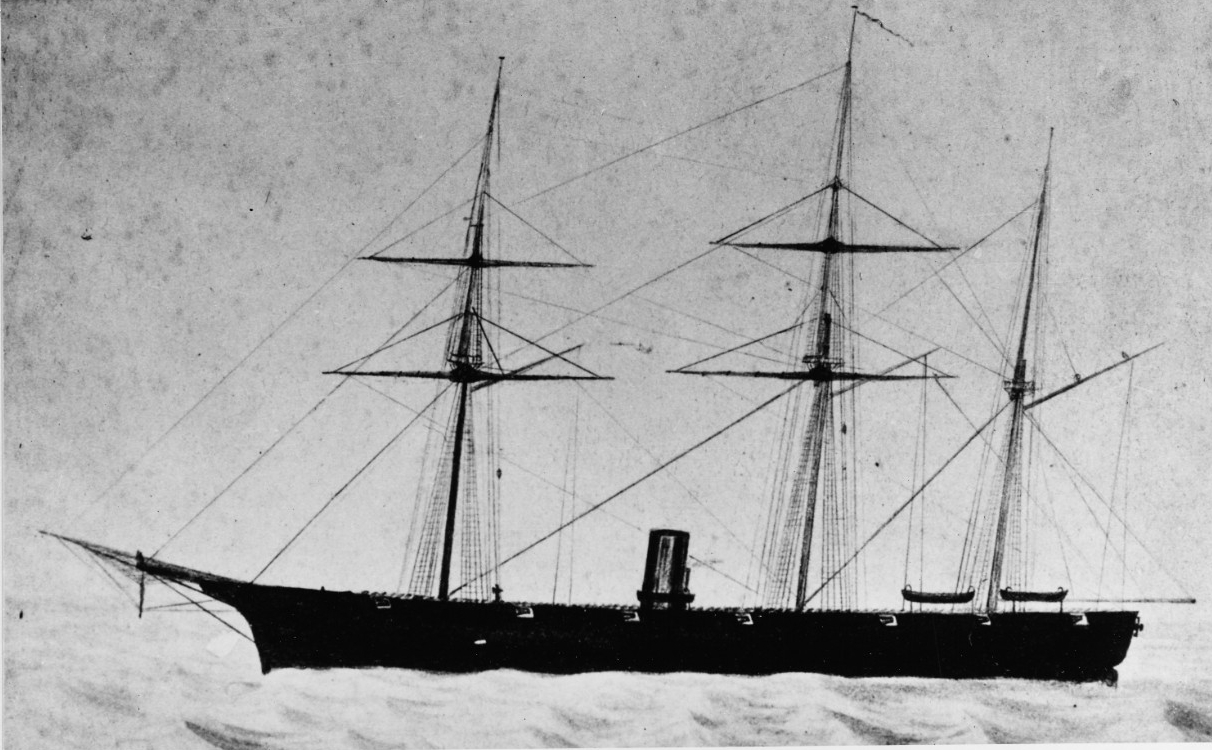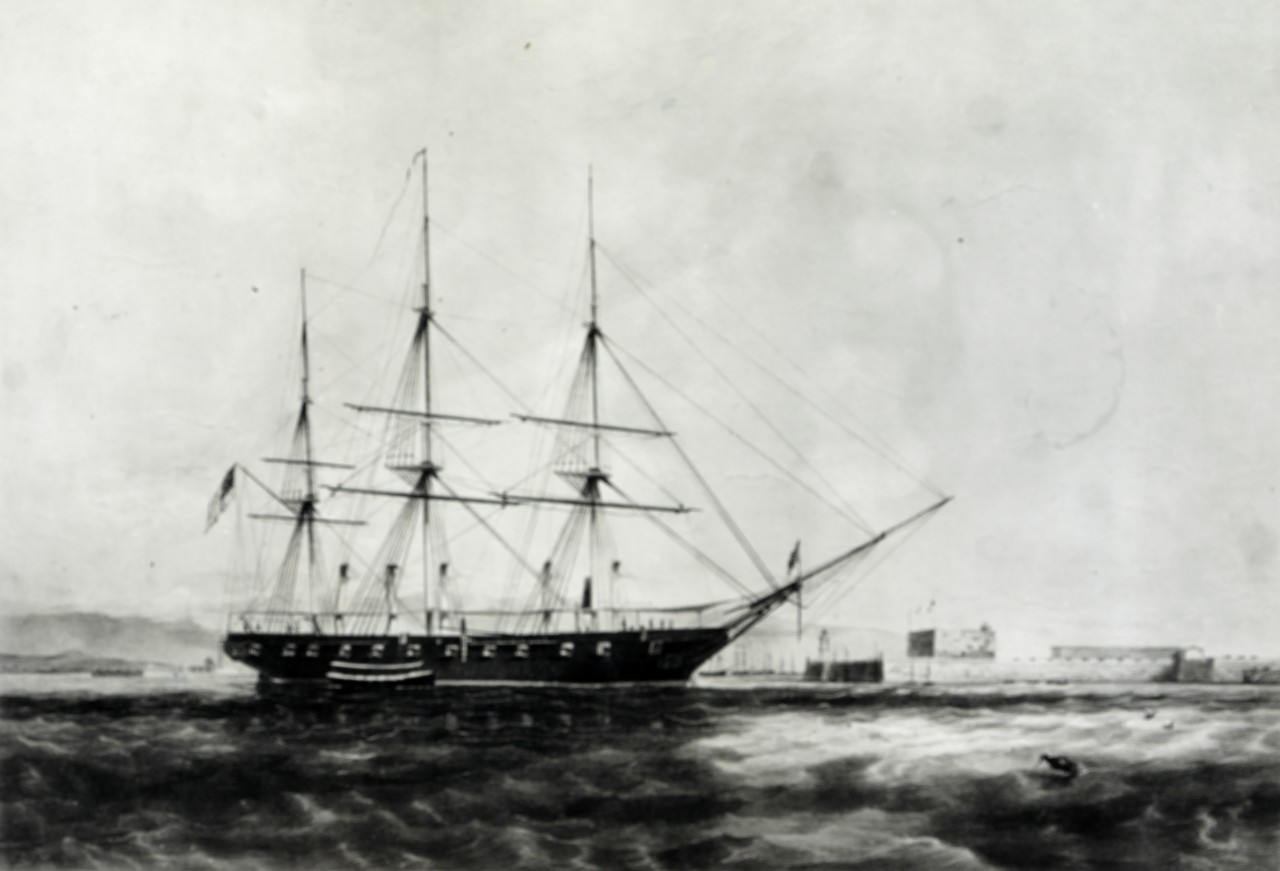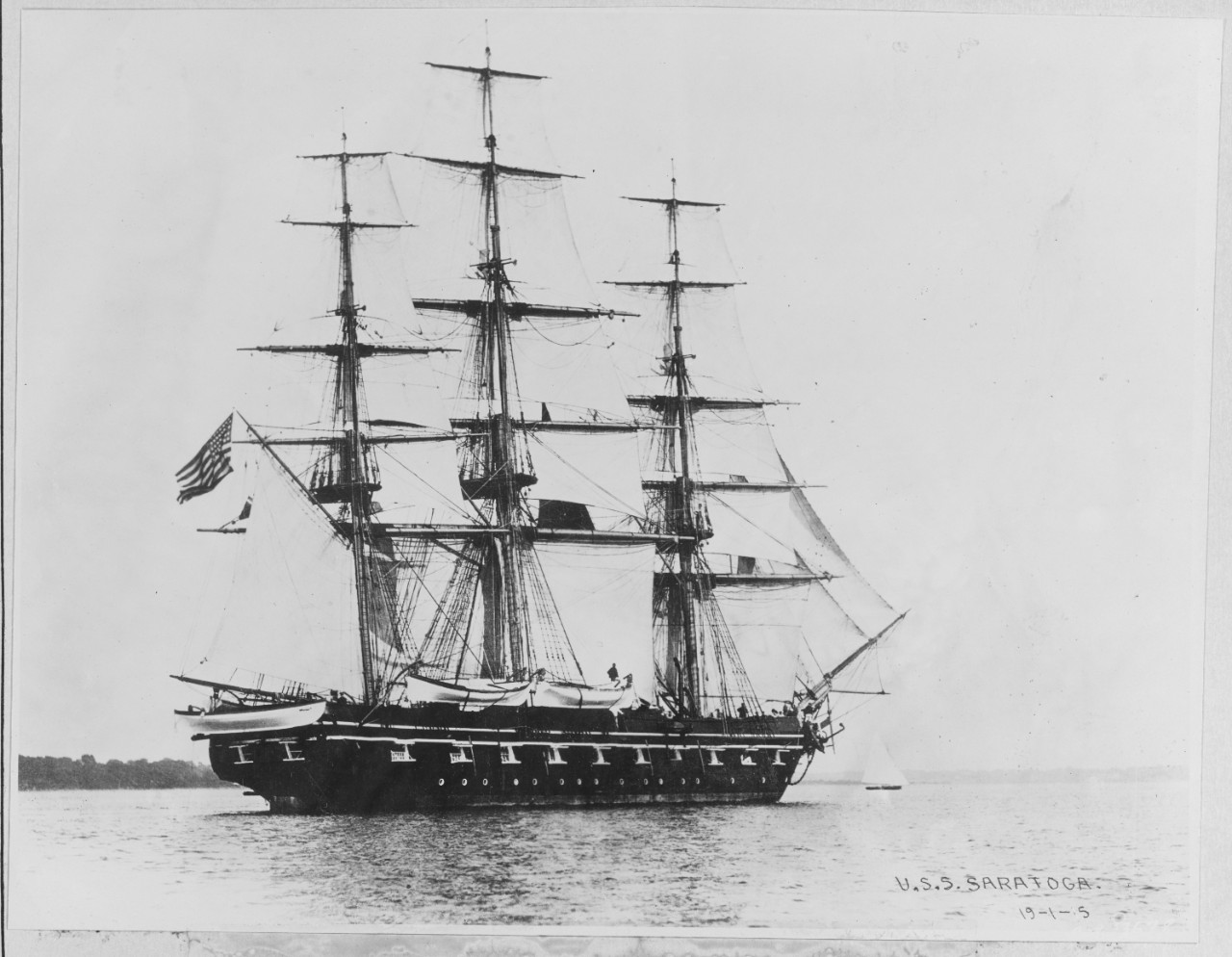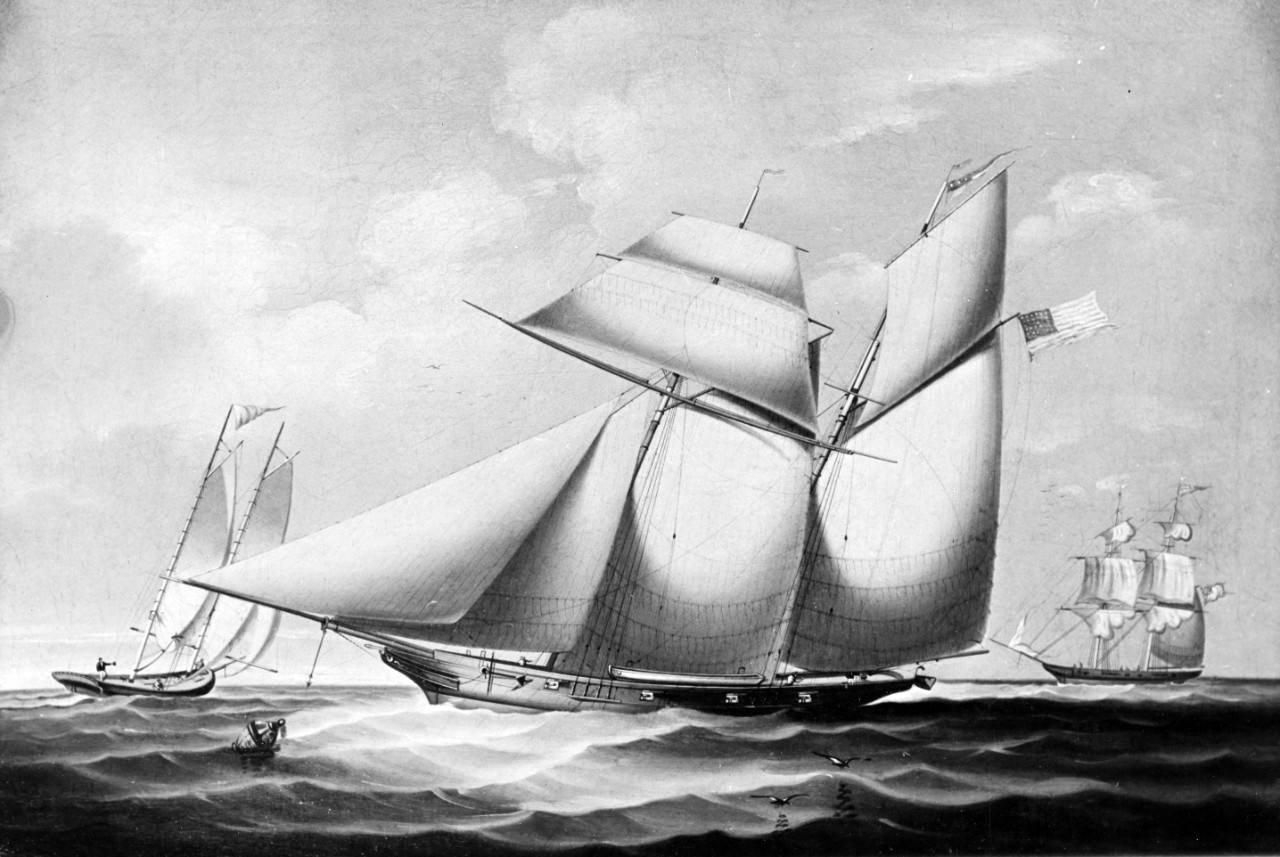Anti-Slave Trade Patrols
Bldg. 76
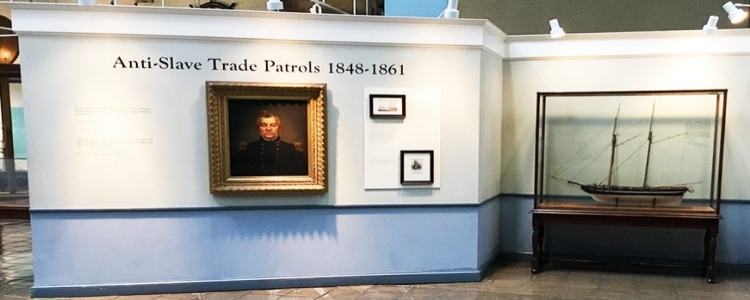
Anti-Slave Trade Patrols
America withdrew from the transatlantic slave trade in 1808. With The Treaty of Ghent, ending the War of 1812, both the United States and Great Britain agreed to work towards ending the slave trade. The U.S. Navy's role in the struggle against slavery began in 1820 when warships deployed off West Africa to catch American slave ships. Enforcement of the slave trade ban was sporadic until the Navy deployed a permanent African Squadron in 1842. This deployment was due to the Webster-Ashburton Treaty, between the United States and Great Britain signed that August to suppress the slave trade. Despite the vigilance of American, as well as British and French, warships in African waters, the overseas slave trade increased in the 1850s, owing to the high demand for slaves in Latin America. The U.S. Navy's participation lasted until the start of the U.S. Civil War, April 1861.
Interesting artifacts in the Anti-Slavery Patrol exhibit include:
- Model of USS Shark (Schooner)
- Painting, oil on canvas, of Captain Elisha Peck (Captain of Sloop-of-War Portsmouth)
Click on the model below to review a photographic history of USS Shark.
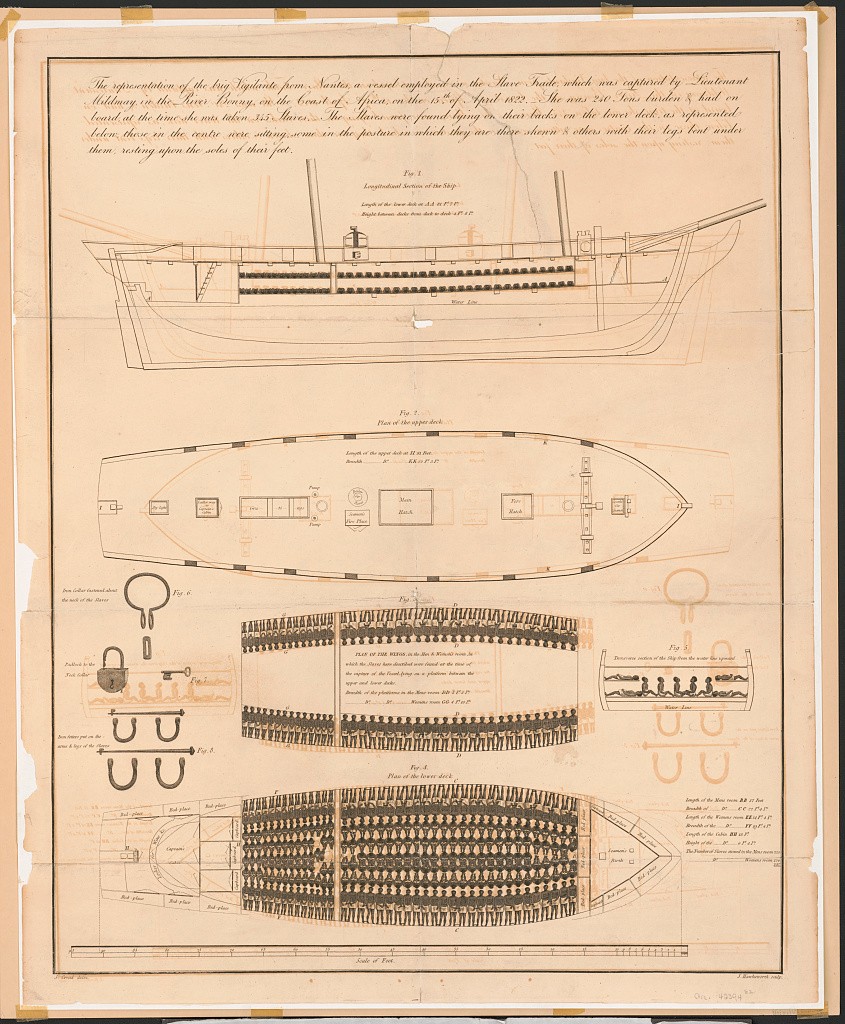
The representation of the brig Vigilante, from Nantes. Engraved by John Hawksworth. Courtesy of the Library of Congress, LC-DIG-pga-07051.
This diagram shows how slave traders crammed 400 men and women into a ship's hold 25 wide and 100 feet long, where they lived for at least 30 days in wretched confinement.
American Maritime Legislation Against Slavery
The Webster-Ashburton Treaty solved many border disputes between the United States and the British owned Northern Colonies. One of its main impacts on the U.S. Navy was the end to the Slave Trade. It brushed over the Creole Case. In November 1841, there had been a slave revolt on the American rig, Creole, which forced the ship to the Bahamas where officials emancipated all 128 slaves who agreed to stay as Britain had abolished slavery in all colonies. Initially demanding the return of the slaves along with compenstation, the U.S. finally received settlement in 1853. The initial attempts to limit the institution of slavery in the United States was slow. For instance, the Webster-Ashburton Treaty was not enforced until after the American Civil War had ended. Other factors such as fear of disease and lack of steam warships and coaling stations played a part in the United States' lack of intervention. However, as the government, country, and Navy grew stronger, their ability to enforce became evident.
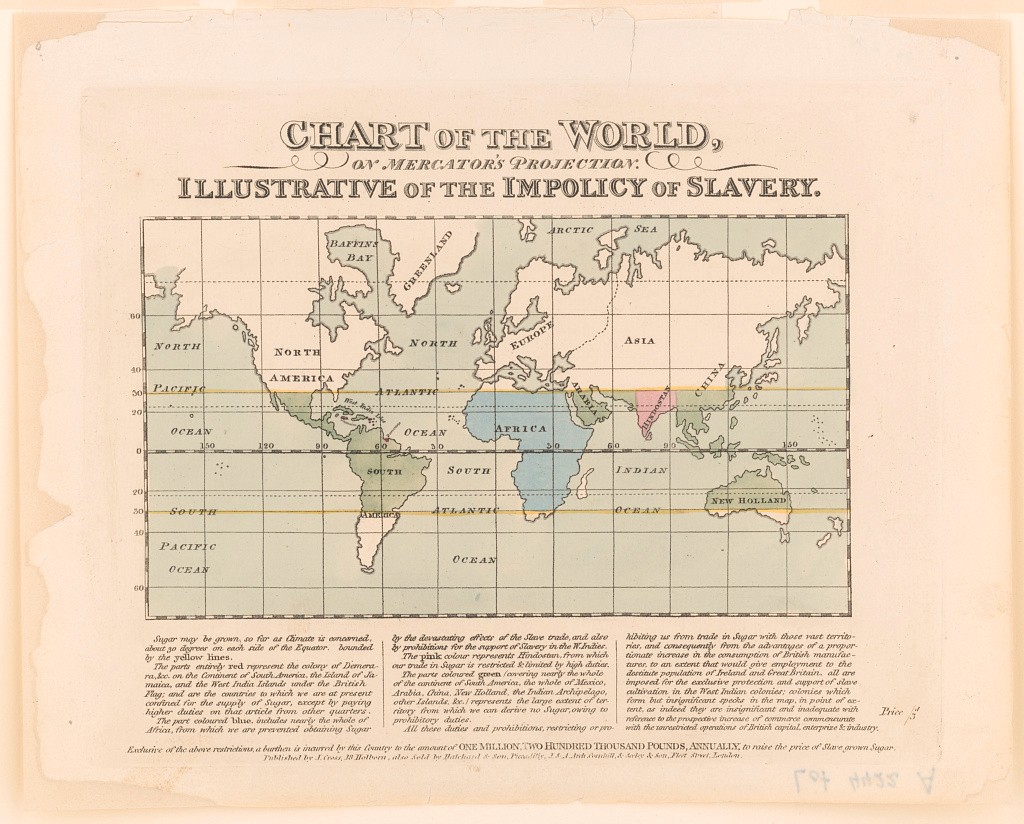
Chart of the world, on Mercator's projection. Illustrative of the impolicy of slavery. Map showing sugar producing areas where slave labor is used, contrasted with sugar producing areas with which trade is restricted or prohibited because of high duties which protect the sugar of the slave economy. Published by J. Cross, [between 1800 and 1833] Library of Congress photograph, LC-USZC4-3650.
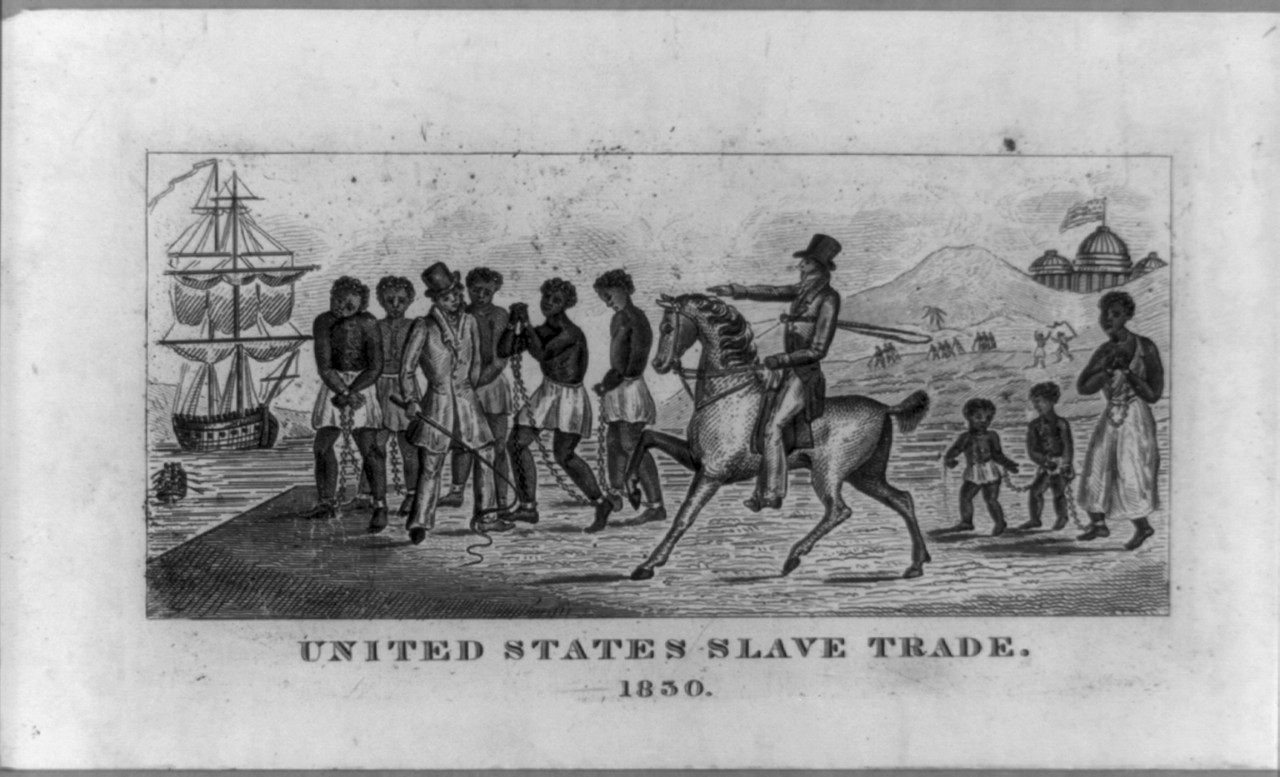
An abolitionist print possibly engraved in 1830, but undocumented aside from the letterpress text which appears on an accompanying sheet. The text reads: "United States' slave trade, 1830. The Copper Plate from which the above picture has just been engraved, was found many years ago by workmen engaged in removing the ruins of Anti-Slavery Hall, in Philadelphia, which was burned by a mob in 1838. No previous impression of the Plate is known to its present owner. A scene in the inter-State Slave trade is represented." The writer goes on to describe the scene as a group of slaves in chains, with a mother "fastened to her children," being sold by a trader on horseback to another. "Both dealers have whips in their hands. A ship and a boat, each loaded with slaves, are seen on the left. In the background, slaves are working in gangs, and one man is being flogged. The United States Capitol, surmounted by its flag, overlooks the scene in the distance. The engraving....is an interesting contribution to American History. Price 20 cents." Courtesy of the Library of Congress: USZ62-89701
Act to Prohibiting Importation of Slaves (1807)
On March 2, 1807, Congress passed the Act Prohibiting Importation of Slaves. According to this act, importation of slaves to any port or place within the jurisdiction of the United States was banned. The U.S. also declared the right to seize any ship that looked outfitted to be a slaver. This law could not go into effect until January 1808, because the Constitution had protected slaver trade for 20 years following ratification in 1789.
Treaty of Ghent (1815) and the Webster-Ashburton Treaty (1842)
The Treaty of Ghent and the Webster-Ashburton Treaty were between the Americans and the British; both mentioned abolishing the slave trade as a goal. The main purpose of the Treaty of Ghent was to end the War of 1812. However, it also stated that both countries should try to intercept slavers in the Atlantic Ocean. The Webster-Ashburton Treaty, signed on August 9, 1842, defines the common anti-slaving goals between Britian and the United States, declaring both parties will equip and maintain vessels expressly for the purpose of patrolling the coast of Africa. The U.S. did not approve British inspection of American ships carring slaves. Instead, the Navy was to search suspected slavers leaving Africa who were flying the American Flag.
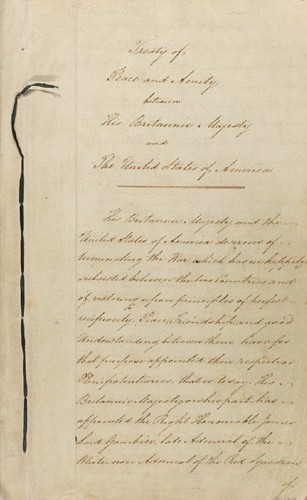
First page of the Treaty of Ghent. U.S. National Archives.
Lyons-Seward Treaty (1862)
Another treaty between the United States and Britain, the Lyons-Seward Treaty, dedicated a portion of each country's navy to be outfitted and given command to search and apprehend American or British merchant ships which appeared to be outfitted for slavery. Only officers could perform searches on the ships, and there were strict guidelines on how to handle searches. A merchant ship could only be stopped up to 200 miles off the coast of Africa and 30 leagues (one league = three statute miles) off the coast of Cuba.
Commodore Robert F. Stockton
Born in Princeton, New Jersey, Robert F. Stockton was the first naval captain to independently act against the slave trade in the Atlantic. He received command of the schooner Alligator in 1821, and used the ship to capture many slavers including the Mathilde, L'Eliza, and Daphe. He also helped create the American colony of Liberia with the American Colonization Society as a place to resettle freed slaves.
Navy Secretary Abel P. Upshur
Despite being a slave owner himself, Abel P. Upshur was instrumental in the creation of the Navy's African Squadron, which was established after the Webster-Ashburton Treaty. Upshur named Captain Matthew C. Perry as the first squadron commander, and gave him command of the frigate Macedonian, the sloops of war Saratoga and Decatur, and the topsail schooner Porpoise.
Commodore Matthew C. Perry
After a firmer establishment of the African Squadron, he was named the first commander of the flotilla in March 1943 by Secretary Upshur. He made several cruises to the coast of Africa and to the Mediterranean, and commanded the schooner Shark in the West Indies. He was promoted to master commandant in 1826 and named captain eleven years later. From 1838 to 1840, he commanded the steam frigate Fulton in connection with experiments in steam navigation. He also also known for the Kanagawa Treaty in 1853-54, which opened trade with Japan.
Captain Elish Peck
With four decades of sea service and at the age of fifty-nine, the Navy ordered Peck to his last sea duty as captain of the sloop-of-war Portsmouth in the West African Squadron. Although Peck and his crew patrolled off the African coast in search of slave ships for nearly eight months, they failed to capture any vessels carrying human cargo. Peck returned to America, receiving shore commands until the Navy placed him on the reserve list in 1855. With the great demand for naval officers during the Civil War, the Navy recalled Peck to take charge of newly recruited sailors at Portsmouth Navy Yard, New Hampshire. For this service, Peck was promoted to captain in 1863, just three years before his death.
Andrew H. Foote
A fervernt Protestant, temperance supporter, and abolitionist, Lieutenant Andew H. Foote was captain of the brig Perry. He commanded the Western Flotilla during the Civil War. An author of a 390 page book, Africa and the American Flag, it describes the geography of the African continent, the customs of many of the African people, the establishment of American colonies, and the slave trade, and the need to protect American citizens and commerce abroad.
Ships of the African Squadron
The African Squadron was a small fleet of ships pulled from regular U.S. Navy service to patrol the African coast between 1821-1861. It was strengthened through the Webster-Ashburton Treaty of 1841. Its goal was to apprehend any ship appearing to be outfitted for transporting slaves. Between 1842 and 1861, only 19 of the 36 captured crews went to court and faced trial, and very few were actually convicted of slave importation. All ships were called back to the United States in 1861, due to the beginning of the Civil War.
Below are some slaver captures and engagements
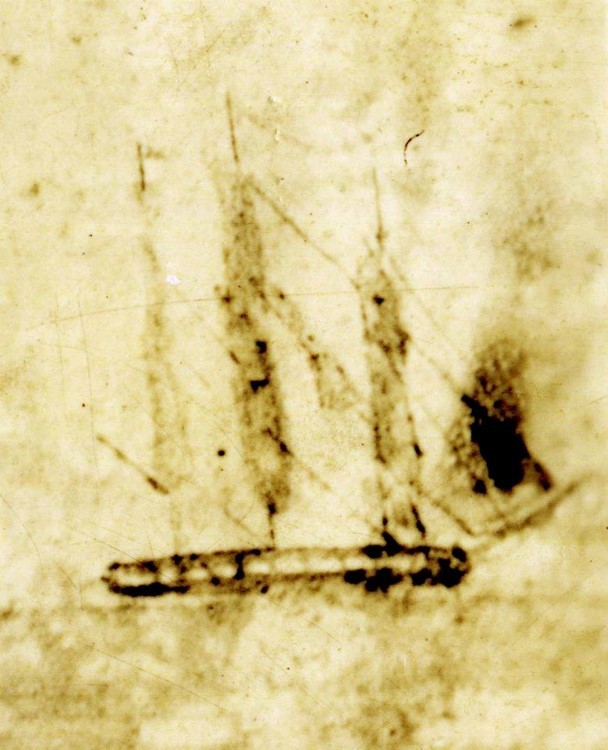
Cropped image of Yorktown, artwork by Gunner William H. Myers. NHHC Photograph Collection, NH 54488.
On December 15, 1845, the sloop-of-warYorktown captured the slaver Panther off Kabenda, Africa. Previously, in September, Yorktown also captured the slavers Pons and Patuxent.
On January 15, 1846, the sloop of war Jamestown captured the slaver Robert Wilson off Porto Praya.
On June 6, 1850, the brig Perry, commanded by Lieutenant Andrew H. Foote, captured the American slaver Martha off Ambriz (near the city of Luanda), Angola, Africa.
On November 3, 1853, as the flagship of the African Squadron under the command of Commodore Isaac Mayo, the frigate Constitution cruised the African Shore, about 60 miles south of the Congo River when sails were sighted. The Constitution gave chase and eventually captured American slaver, the schooner H. N. Gambrill. This capture was the frigate's last prize.
On August 21, 1858, the brig Dolphin captured the slave ship Echo with 300 Africans on board off the north coast of Cuba. She was taken to Charleston, South Carolina, and those saved from slavery were later sent back to Africa.
On September 8, 1858, the sloop-of-war Marion captured the American slave ship, Brothers, off the southeast coast of Africa.
On September 21. 1858, the sloop Niagara departed Charleston, South Carolina, for Liberia carrying 200 Africans liberated from slave brig Echo off Cuba by brig Dolphin 21 August to Liberia.
On December 21, 1859, the sloop of war Constellation captured the American slaver Delicia off Kabenda, Africa.
On May 6, 1860, while serving with the West Africa Squadron, the sloop-of-war Portsmouth, commanded by John Calhoun, captured the slaver brig Falmouth off Porto Praya. The vessel was sent to New York.
On June 29, 1860, the steamer Mystic, commanded by William E. LeRoy, captured the slaver Thomas Achorn at Kabenda, Africa, and sent her to New York. This steamer was chartered by the Navy in 1858 for the Paraguay expedition, purchased in 1859 and served as Mystic until sold in June 1865. She was the civilian steamer General Custer in 1865-1868.
On August 8,1860, the screw frigate San Jacinto, commanded by Captain William M. Armstrong, captured the American slaver Storm King with 616 slaves on board, off the Congo River. A prize crew from the steam frigate sailed the captured slaver to Monrovia and turned the newly freed Africans over to the United States agent there before proceeding to Norfolk with the prize.
On September 21, 1860, the sloop Portsmouth captured the American slave ship, Emily, at Loango, Africa.
On September 26, 1860, the sloop-of-war Constellation, commanded by J.S. Nicholas, captured the American slaver Cora with 705 slaves on board off the Congo River. The newly freed slaves were taken to Monrovia, Liberia.
On October 10, 1860, the steam sloop San Jacinto, commanded by Captain T.A. Dorwin, captured the slaver Bonito in the South Atlantic with about 622 slaves onboard. Bonito was taken into Naval service.
On February 25, 1861, the sloop of war Saratoga, vessel of U.S. African Squadron, captured the slaver sloop Express.
On April 21, 1861, the Sloop-of-War Saratoga, commanded by Alfred Taylor, captured Nightingale, a clipper slaver, at the mouth of the Congo River at Cabinda, Angola, with 961 slaves on board. On 23 April, the captured clipper sailed for Liberia, arriving at Monrovia on 7 May. En route, a fever raged through the ship killing 160 of the freed slaves and one crew member. Returning to the U.S.on May 13, the fever weakened the crew leaving only 7 of her 34 man crew fit for duty, with two sailors dying before reaching New York on 15 Jun. Acquired by the U.S. Navy, Nightingale later served as Nightingale during the Civil War.
The Last Slavers
The slaver Wanderer and the schooner Clotidla were the last ships to bring slaves to the United States. Wanderer was originally designed as a luxury racing yacht, but was purchased and outfitted as a slaver by William Corrie and Charles Lamar. Four hundred and seven Africans were brought to Jekyll Island, Georgia, by Wanderer in November 1858. Captured before the start of the Civil War, Wanderer became a Union blockade ship and captured at least two Confederate ships. Clotidla was purchased for the sole purpose as being a slaver. After bringing in 11 slaves in July 1860, she was burned, making it the last ship to bring slaves to the United States.
Following her service in the U.S. Navy, Wanderer was sold for merchant service and was lost off Cape Maisi, Cuba, in January 1871.


